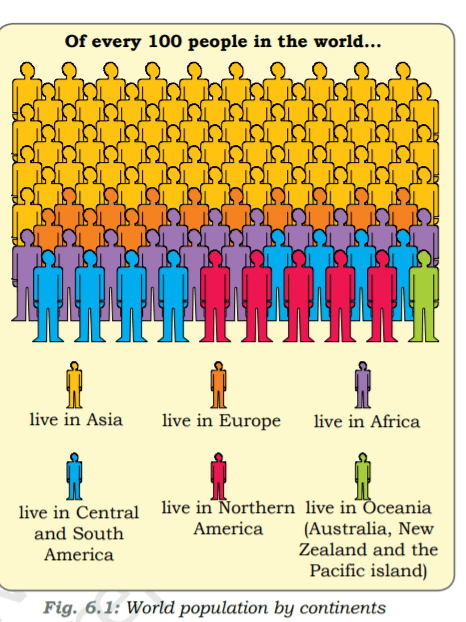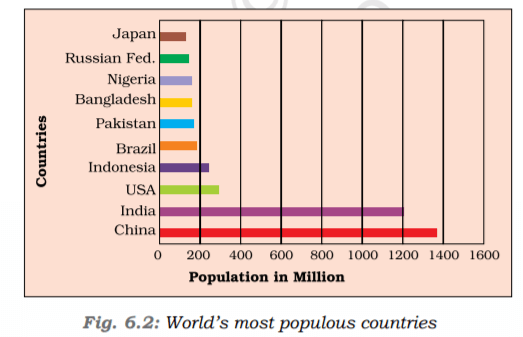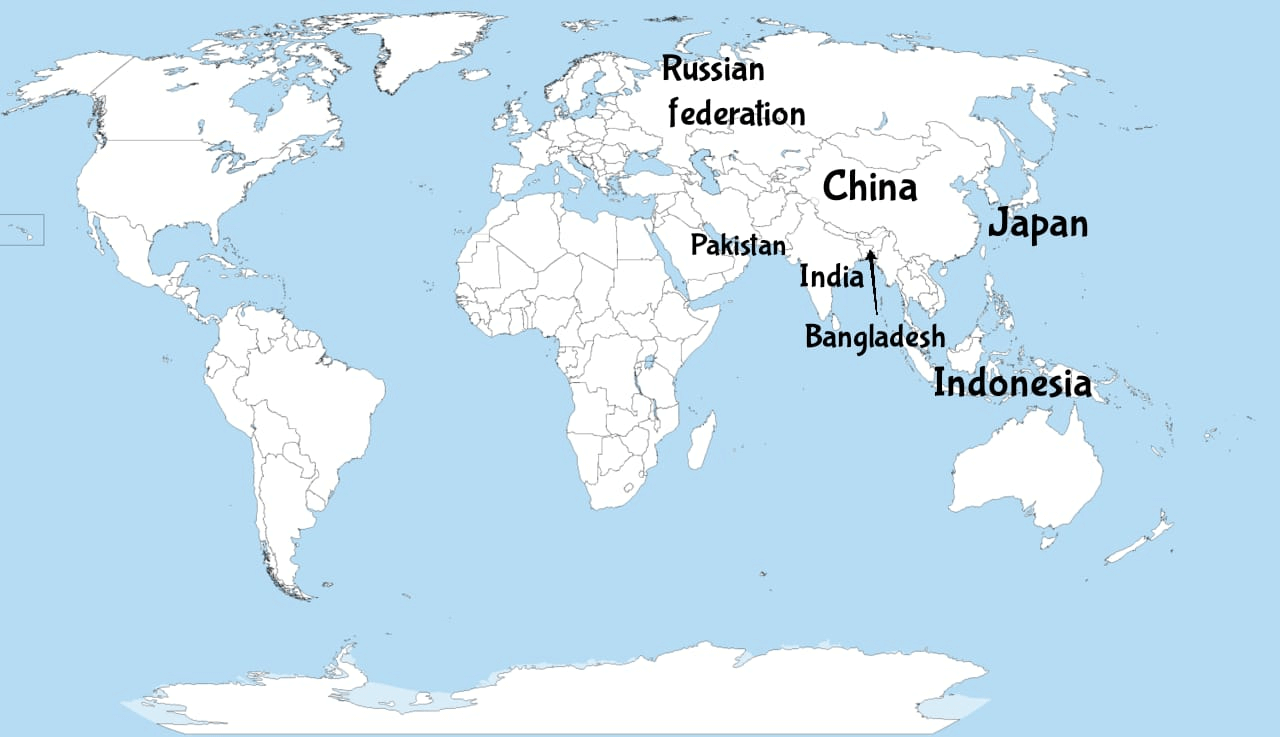Geography - Class 8
Resources and Development
Chapter 6: Human Resources
Question 1:Answer the following questions.
(i) Why are people considered a resource?
Answer:
Nature’s bounty becomes significant only when people find it useful. It is people with their demands and abilities that turn them into ‘resources’. Hence, human resource is the ultimate resource. Healthy, educated and motivated people develop resources as per their requirement.(ii)What are the causes for the uneven distribution of population in the world?
Answer:
The causes for the uneven distribution of population inthe world are :- Fertile land
- Availability of Water Supply
- Availability of Electric Supply
- Favourable Climatic conditions
- proper transportation and communication facilities
- of Population
- Educational Factors
- Social Factors
- Political Factors
(iii)The world population has grown very rapidly. Why?
Answer:
The main reason for this growth was that with better food supplies and medicine, deaths were reducing, while the number of births still remained fairly high.(iv)Discuss the role of any two factors influencing population change.
Answer:
Two factors influencing population change are :-- Birth and death rates
- Births are usually measured using the birth rate i.e. the number of live births per 1,000 people.
- Deaths are usually measured using the death rate i.e. the number of deaths per 1,000 people.
- Migration is another way by which population size changes. Within countries large number of people may move from the rural to urban areas in search of employment, education and health facilities.
(v) What is meant by population composition?
Answer:
Population composition refers to the structure of the population.The composition of population helps us to know :
- how many are males or females,
- which age group they belong to,
- how educated they are
- what type of occupations they are employed in,
- what their income levels and health conditions are.
(vi)What are population pyramids? How do they help in understanding about the population of a country?
Answer :
A population pyramid shows :- The total population divided into various age groups, e.g., 5 to 9 years, 10 to 14 years.
- The percentage of the total population, subdivided into males and females, in each of those groups.
A population pyramid in which the base is broad and the top part is narrow means that a large amount of births takes place but many died before reaching adult age. This indicates a large death rate.
Question 2:Tick the correct answer.
(i) Which does the term population distribution refer to?
(a) How population in a specified area changes over time.
(b) The number of people who die in relation to the number of people born in a specified area.
(c) The way in which people are spread across a given area.
(ii) Which are three main factors that cause population change?
(a) Births, deaths and marriage
(b) Births, deaths and migration
(c) Births, deaths and life expectancy
(iii) In 1999, the world population reached
(a) 1 billion
(b) 3 billion
(c) 6 billion
(iv) What is a population pyramid?
(a) A graphical presentation of the age, sex composition of a population.
(b) When the population density of an area is so high that people live in tall buildings.
(c) Pattern of population distribution in large urban areas.
Answers :-(i) (c) The way in which people are spread across a given area.
(ii) (b) Births, deaths and migration
(iii) (c) 6 billion
(iv) (a) A graphical presentation of the age, sex composition of a population.
Question 3:Complete the sentences below using some of the following words.
sparsely, favourable, fallow, artificial, fertile, natural, extreme, densely
When people are attracted to an area it becomes .......................
populated
Factors that influence this include ....................... climate; good
supplies of ....................... resources and ....................... land.
Answers
When people are attracted to an area it becomes densely
populated
Factors that influence this include favourable climate; good
supplies of natural resources and fertile land.
4.Activity
Question :Discuss the characteristics of a society with ‘too many under 15s’ and one with ‘too few under 15s’.
Hint : need for schools; pension schemes, teachers, toys, wheel chairs, labour supply, hospitals.
Answer :
A society with ‘too many under 15s’ means that the number of children is more.
- To educate the children and provide them education more schools will be required.
- The demand for materials like blackboards, chalks, tables, benches for schools will be more.
- The demand for stationery items like pens, pencils, erasers, notebooks, textbooks will be more.
- The requirement of teachers will be more.
- More parks will be required for children to play.
- The toy industry will need to be expanded.
- More children will ensure the supply of young, spirited, and skilled labour supply for the future.
A society with ‘too few under 15s’ means that the number of adults in a society is more.
- The government will have to invest in the construction of old age homes, hospitals, doctors, nurses and medical equipment, as their will be few children who can look after their elders.
- Pension schemes will have to be launched as support to the old age people.
Intext Questions :

Question :Study Fig. 6.1 and find out: of the world’s total population which continent has
(a)only 5 per cent
Answer :
North America(b)only 13 per cent
Answer : Africa
(c)only 1 per cent
Answer :Oceania
(d)only 12 per cent
Answer :Europe
Question :Look at Fig 6.2 and find out: of these countries how many are in Asia? Colour them on a world map.
Answer :

